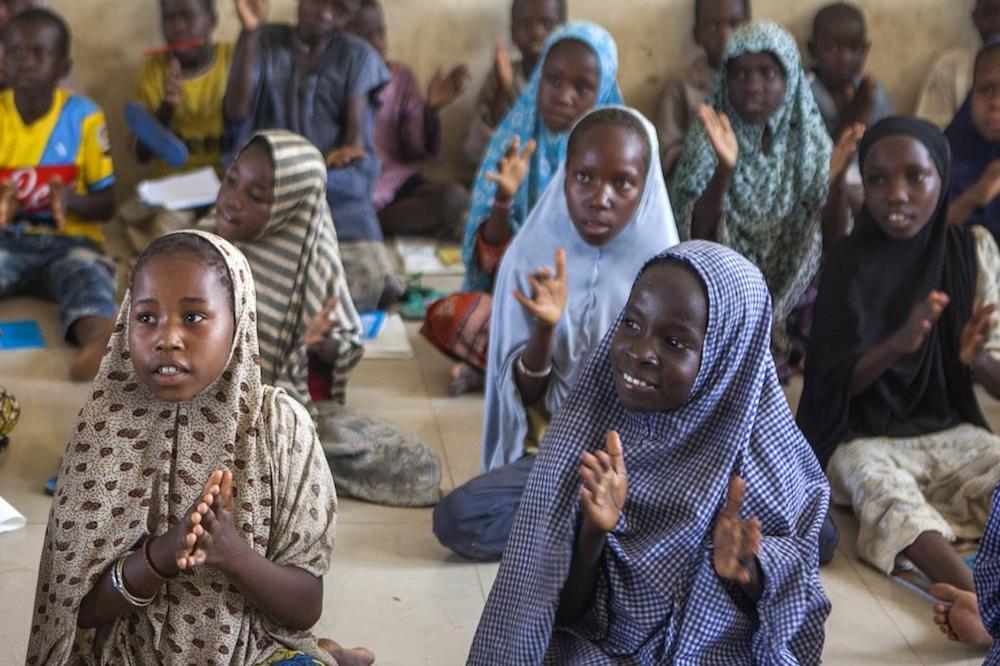
How education can protect children from a life of exploitation
Child labour
Rescued workers in India on World Day Against Child Labour
Education is a basic human right, an investment for the future peace and prosperity of our world.
Education can protect entire generations of at-risk communities from cycles of poverty. The opportunity to go to school not only opens more and new vocational opportunities, increases earning potential, improves health outcomes and promotes girls’ rights, but – for the most vulnerable children – education can be the difference between freedom and lifelong exploitation.
This week world leaders have been meeting in Addis Ababa for the Third International Conference on Financing for Development to discuss a financing framework for sustainable development that is accessible to all.
There is a growing recognition of the need to reach the most vulnerable, the marginalised, the poor, those in conflict and emergency situations. Ensuring equitable access to education for these children is critical to eradicating poverty.
For those vulnerable to exploitation, the chance to receive an education provides protection for themselves and for future generations and can be the difference between life and death.
Trafficked and bonded children rescued in India by Bachpan Bachao Andolan, the organisation founded by Kailash Satyarthi
There are an estimated 168 million child labourers in the world today, more than half of whom are engaged in the most hazardous forms of labour – those who are trafficked, forced and bonded labour, prostitution and child soldiering – harmful to their health, safety and emotional well-being.
For these children, realising the right to education is an uphill struggle. And the relationship goes both ways – while child labour keeps many children out of the classroom, out-of-school children are at greater risk of falling into abusive labour circumstances.
Lack of education not only makes children more vulnerable to exploitation as child labourers, but it also leaves them vulnerable to manipulation by exploitive employers into their adult lives – potentially affecting their families for multiple generations.
Traffickers and employers of bonded labourers target the uneducated for exploitation. They take advantage of the illiteracy, innumeracy and ignorance of the law common among vulnerable populations.
Many bonded labourers in India, for example, do not realise that they are in a situation of illegal bondage. Traffickers and bonded slave owners are able to manipulate labourers who are offered an initial “advance” – usually a small amount of money – to lure them to work, then kept in slave-like conditions until the “debt” is repaid.
Children working at a vegetable market in Islamabad, Pakistan
Entire families, including children, labour in environments where their rights are systematically violated, unaware that their work has already repaid more than the original debt amount – in some cases as much as 800 times more.
After years of work, illiterate labourers may even be shown a random page of numbers and told that they are deeper in debt to their employers than when they began working. Without basic literacy and numeracy skills, this tactic is enough to secure entire families as slave labour for generations.
This system is so effective at creating a sense of moral obligation to pay off this false debt such that many victims don’t try to escape despite rampant physical and sexual abuse. There are even instances when labourers refuse to leave when an opportunity of rescue is offered believing that they still owe money and should continue to work to pay it off.
Additionally, labourers’ ignorance of their legal right to protection from enslavement and caste-based abuse, as well as the right to receive a minimum wage, allows employers to commit gross atrocities with impunity.
To curb atrocities like bonded labour many things are needed – improved rule of law, training of law enforcement officers, prosecution of perpetrators, increased opportunities for non-exploitive employment – but we will not see these abuses end without ensuring education for all, the great equaliser.
Kailash Satyarthi has rescued thousands of child labourers in India
Without access to education countless children, women and men will remain susceptible to these forms of exploitation. Financing for basic education has stalled and funding to reach the most marginalised – those at highest risk of recruitment as child soldiers, becoming child brides, children living in conflict or emergencies – is practically non-existent.
Though we’ve made progress, we cannot claim success on universal primary education without reaching these unreached groups.
In the run-up to the recent Global Summit on Education for Development in Oslo, widely known child rights activist and Nobel Peace Prize winner Kailash Satyarthi led a charge for Nobel Laureates across various disciplines to call for increased investment in education for sustainable development.
Satyarthi, who has rescued many child labourers firsthand, strongly argues that “the denial of the opportunity to go to school and develop skills, hampers employability and children end up in a vicious cycle of poverty. Also, out-of-school children are at risk of exploitation and are most likely to be engaged into child labour at the cost of their education, health, freedom and overall well-being and development.”
To end child labour and place future generations on a better footing to resist exploitation, we must invest in education and we must invest a vision of equitable education that reaches the most marginalised and at-risk children.
Learn more about child labour here. And find out what every child should know about child labour.
More news

